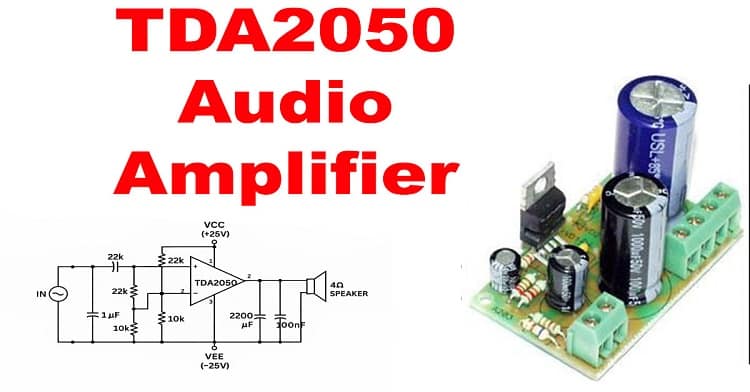50W Audio Amplifier Using TDA2050 IC | DIY Power Amp Circuit
[Sekhohub.online]
Build a powerful 50W audio amplifier using the TDA2050 IC. This DIY project delivers clear sound for speakers and subwoofers. Includes circuit diagram, parts list, and PCB layout.
Introduction
In this project, you will learn how to make a high-quality 50W audio amplifier using the TDA2050 IC. This amplifier is ideal for powering speakers, subwoofers, or creating your own home audio system. The TDA2050 is a powerful audio amp IC that delivers low distortion, high output, and thermal protection—perfect for DIY audio builds.
Features of TDA2050 Amplifier
Output Power: Up to 50W on 4Ω load with ±25V supply
Low Total Harmonic Distortion (THD < 0.05%)
Built-in short-circuit and thermal protection
Compact and simple to build
Materials for the Project
1- 1X TDA2050 IC
2- 1X 1000UF 35V CAPACITOR
3- 2X 100UF 50V CAPACITOR
4- 2X 1UF 50V CAPACITOR
5- 1X 22UF 50V CAPACITOR
6- 1X 0.1 µF NON-POLAR CAPACITOR
7- 1X 470R RESISTOR
8- 4X 47K RESISTOR
9- 1X 50K VARIABLE RESISTOR
10- JUMPER WIRES
11- VERO BOARD
12- HEAT SINK
13- AUDIO JACK
Download Circuit Diagram
Circuit Diagram
Download PCB LAYOUTS
PCB LAYOUTS
⚙️ Working Explanation
The TDA2050 IC is configured in a Class AB amplifier mode, which uses a feedback network to stabilize gain and frequency response. The input audio signal passes through coupling capacitors and resistors that set the gain, while the output is filtered and driven through the speaker load.
This design uses a split power supply (±25V) to allow the output waveform to swing both positively and negatively, giving better efficiency and lower distortion.
Power Supply
For maximum output:
Use a dual rail power supply: ±25V @ 2–3A
You can also use ±18V or ±22V for slightly lower output (~30–40W)
⚠️ Always attach a proper heat sink to the TDA2050 to avoid overheating!
Output Performance
Power Output: ~50W on 4Ω speaker
Frequency Response: 20 Hz–20 kHz
THD: <0.05%
SNR: >90dB
Optional Add-ons
Volume control using a 10k potentiometer
Tone control circuit before input
Speaker protection circuit on output
Bass booster stage (optional)
Video Tutorial
Tips & Recommendations
Use good-quality capacitors (electrolytic + polyester for audio paths)
Keep signal paths short and shielded
Mount the IC on a metal enclosure for better cooling
Avoid ground loop by connecting input and output grounds properly


